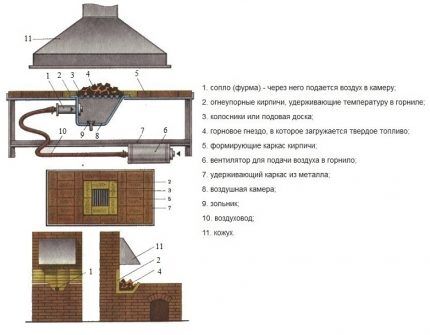How to make a gas forge with your own hands: tips + drawings to help home craftsmen
Equipment for heat treatment of metals is an expensive pleasure.Not every novice master is ready to shell out a substantial amount of money to purchase it. But there are technologies according to which you can build a gas forge with your own hands without much difficulty and expense.
In the article we presented you will find a detailed description of the assembly of the main attribute of blacksmithing. We will talk about how the forge works and its structural components. We will show you how to achieve the temperature required for melting and forging workpieces.
We offer independent home craftsmen to familiarize themselves with homemade products proven by blacksmith practice. You will learn what materials, ready-made devices and tools are required in the manufacture of a forge. Gain insight into the complex process and valuable advice.
The content of the article:
Operating principle and design specifics
A forge is necessary to carry out a number of operations to prepare metal for subsequent processing. The workpiece heated in it is given the designed shape. With its help, the now popular forged jewelry, household parts, utensils, furnishings, etc. are made.
The forge is used in all areas of heat treatment. It can be very miniature, installed literally on a table, or stationary, reminiscent of a traditional brick stove.Regardless of size, all models operate on the same principle.
How does a blacksmith's forge work?
To prepare the metal for subsequent forging, it needs to be heated and literally “softened” under temperature conditions of up to 1100-1200ºС. The conditions are achieved thanks to specific design features that ensure the supply of fuel and oxygen to the combustion zone in the proportions required for the process.
Inside a gas or solid fuel forge, a characteristic chemical reaction occurs: the hydrocarbon is processed. Carbon, produced by the combustion of both gaseous and solid hydrocarbons, catches and appropriates oxygen from the heated metal. The result is steel without oxidizing impurities.
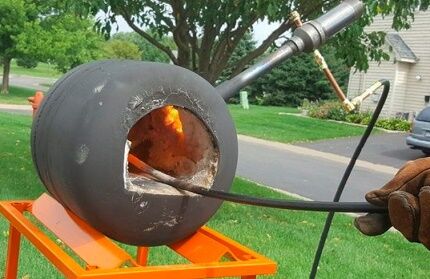
The features of the forge allow you to partially use the reduction potential of carbon. All oxygen is not burned out of the heated workpiece. Thanks to partial reduction, the metal does not burn out completely and does not become brittle, as happens with cast iron.
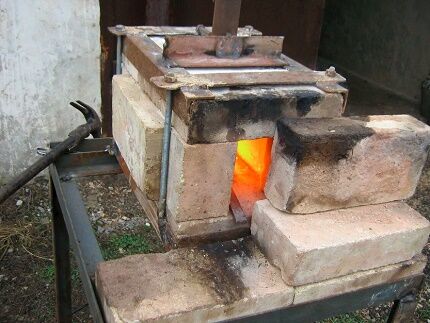
By the way, cast iron products in industry are saturated with oxygen after heat treatment in order to get rid of this disadvantage or at least minimize it.
In an industrially produced forge equipped with a control system, the air required for combustion is pumped so that it is slightly lacking. It is difficult to equip a homemade product with such a device, unless, of course, you install a ready-made gas burner with automation on it.
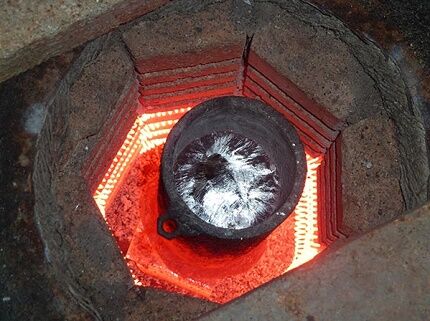
Due to the impossibility of a controlled supply of air, or rather the oxygen contained in it, hand-made forged products are often burned out. This happens in the first stages. However, with experience comes the ability of the master to feel when to stop heating, as well as knowledge of what needs to be done to avoid complete loss of oxygen.
Device and working components
There are a great many options for making homemade models, tested by blacksmiths in practice. We will present only a small part of them. Before deciding which gas forge is best to make with your own hands, let’s look at the typical features of the device.
In technical essence, any forge is a kind of furnace with characteristic accessories: a firebox, a grate, an air chamber, called Russian heating units blower. Unlike a conventional stove, the air chamber is equipped with drainage to regulate the air supply and a pipe with a valve.
The grate is strengthened so that it is able to resist considerable thermomechanical effects. A regular grill made of metal rods or corner scraps will not work. You need a reinforced device. Ideally, it would be better to have a thick metal panel built into the desktop with evenly drilled holes.

The combination of the listed components is called a tuyere. Industrial furnaces are equipped with several of them, so that they can be changed depending on the required conditions for performing a certain operation and on the size of the workpiece being heated.
The lance is most often installed not in a closed housing, but rather mounted on a table. It needs to be sufficiently stable and protected from thermal effects, for which a lining is used. In a number of designs, a grate is built into the table or a metal perforated panel is installed instead.
The lining of the table for a stationary furnace, which is going to be actively used, uses refractory quartz brick. Homemade products for one-time work are lined with fireclay bricks. It’s easier to find it on sale, and the price is lower.
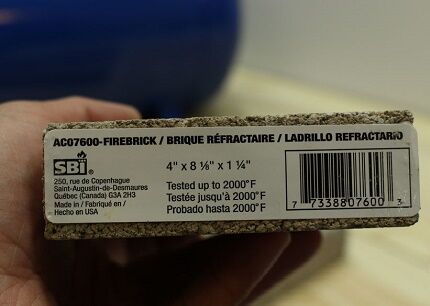
For complete collection and removal of flue gases, a tent or umbrella is placed above a table with a perforated panel or above a tuyere. They are connected to a smoke channel, which is constructed according to the principle chimney for gas boiler. It must work flawlessly, because... The gases released when metal is heated are extremely toxic.
In addition to the main structural components, there are also additional devices. Usually, blacksmiths place a hardening bath next to the forge so that the finished product can be immediately dipped into a cooling and hardening environment. This is the case if thermal shock hardening is required.
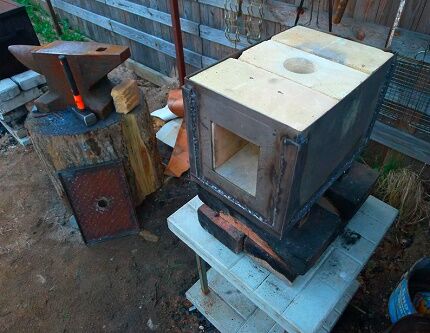
Craftsmen also use a gas-air chamber on a production scale. In it, the products are dried from condensation and additives are added to the composition, which can only be added in a gaseous state. Air is dried there to obtain certain technological conditions.
To increase the area of extremely high temperature, a crucible is used - a cap that expands towards the base. It is needed mainly when working with non-ferrous and precious metals.Handicraftsmen often do not need any of the additions, except perhaps a bath, for which any metal container of sufficient volume can be adapted.
Choosing blue fuel for work
It is believed that for the operation of a forge, both main and bottled liquefied gas. We will disappoint you: it is not advisable to use an unrefined natural option.
There are two good reasons for abandoning natural fuels:
- From the pipe we receive blue fuel, which is a kind of mixture of gaseous hydrocarbons. Their calorific value and oxygen retention abilities vary. Therefore, it is virtually impossible to tune in to the optimal air supply.
- The gas mixture for domestic use always contains, albeit insignificant, the content of impurities that affects the result. The presence of phosphorus and silicon may not be noticed, but sulfur will definitely render the result of labor efforts unusable. Only remelting can save.
In addition, household gas is odorized - giving it a characteristic odor so that a leak can be detected immediately. These substances will also negatively affect quality.

Industrial liquefied gases would be perfect: propane or butane supplied in cylinders. But only if they are monogases without any accompanying impurities at all.
If it is not possible to buy purified blue fuel, you can carry out the purification yourself.To get rid of sulfur-containing compounds, a container with naphthalene will help, through which you must pass the gas before feeding it into the burner.
By the way, if you use a factory-made burner, the process of constructing the forge will be carried out much faster. And you don’t have to worry about the result; everything will work flawlessly and safely. In addition, in the burner, air and gas can be mixed in advance in the proportions required for operation.
Forge construction technology
Let’s immediately make a reservation that the homemade gas forge, the drawings and assembly methods of which we will introduce you to, is not suitable for production purposes. However, it is very easy to make unique jewelry, interesting interior items, and original metal products with its help.
Let's start with the simplest options that do not require the performer to have skills in welding and other construction fields.
Elementary design with gas burner
The simplest forge for forming beautiful tips on a metal rod from which you plan to weld a nice fence in the country, or for forging jewelry can be made from six fireclay bricks.
The grate in this model is welded using two pieces of VGP steel pipe of arbitrary diameter, but not too large. Cuttings of a profile pipe, angle or strip, twisted like a screw, are welded across them. This is necessary to capture the blast flow.
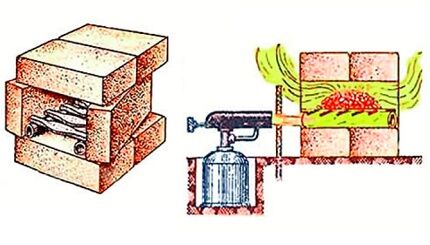
A “firebox” is made from fireclay bricks, which has only a base, an upper ceiling, and two walls on the sides. This forge is installed only outdoors, since there is no smoke removal system. On the pressurization side, dig a small hole in the ground for the housing of a gas burner or blowtorch.
To prevent an explosion from the gas burner during operation of this forge, it is better to place a partition made of asbestos cardboard in front of the entrance to the firebox. After all, the heat emanating from an open firebox can return and heat the gas tank.
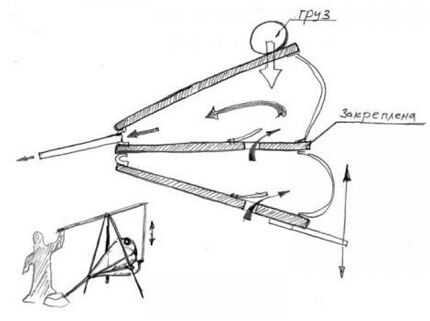
In general, in this device, heating is carried out on coals or coke (fine coke produced specifically for blacksmiths). A gas burner or blowtorch is used only to activate the process. They will ignite and create a blowing jet.
Mobile version from the caterpillar
To install this model, you need a used caterpillar track. Holes are cut at its ends for inserting a homemade or purchased gas burner. Two recesses are cut above the holes. This model, like the previous type, can be used exclusively in the fresh air.
The lining of a homemade hearth is made with a mixture of fireclay sand and fireclay brick. You can purchase a ready-made mixture for this. There is no need to bake anything special after application. Hardening of the lining composition will occur during use of the device.
For supercharging, a fan of suitable type and power is installed, for example, from a manual siren.A forced-air gas burner is ideal, which can be removed from a used turbocharged boiler, if, of course, it is in working technical condition.
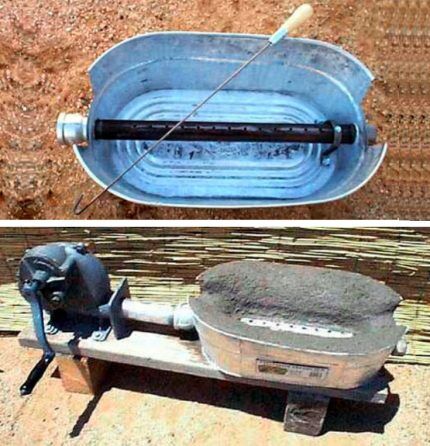
This solution has a significant drawback - it can only be used outdoors, and if you use a blower burner, you will need power. Those. you will have to stock up on either a good extension cord of sufficient power, or take a risk by placing the device near your home.
There is another option - blacksmith bellows, which blacksmiths have used for several centuries. However, we note that manually pumping air into the firebox of the forge is not at all safe. And with performance everything will be problematic and ambiguous.
Stationary equipment for the workshop
Models installed in workshops for permanent work must be not only functional, but also ergonomic. It is important to consider both ease of use and safety, because a red-hot metal blank poses a potential threat. And getting seriously injured is not part of the plans of any normal master.
In this case, the dimensions of the equipment should not be taken as standard, because we are all folded and arranged individually. The forge should be convenient for you and those who will use your workshop if it is rented jointly. The height of the desktop and its dimensions are of particular importance.
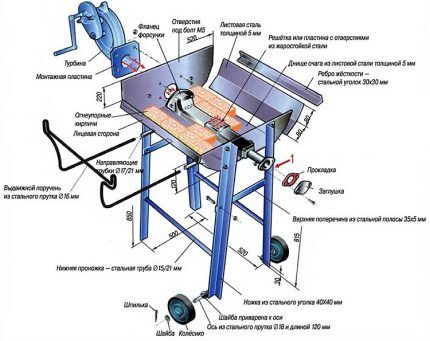
To determine the size of the future forge, we proceed as follows:
- We will choose a place in the workshop that allows us to place all the main and additional equipment in places convenient for carrying out the full range of work on heating, forging and hardening.
- Let's determine our place. Let's stand with our feet shoulder-width apart. Bend your working (right/left) arm at the elbow.
- We measure the distance from the elbow of the bent arm to the plane of the floor. It’s easier for your partner to do this. Then we also get the second result, if you are not the only one doing the forging. We add 5-7 cm to the arithmetic mean of the two distances - we get the height of the desktop.
- We take the largest pliers in order to measure the distance from the stomach to their most extreme point. We add 10-12 cm to the measured distance - we get half the diagonal of the desktop.
- We calculate the length of the side of the square desktop, taking into account the previously obtained half of the diagonal.
The blacksmith table is usually not made round, because... it is inconvenient to work with, especially if you have to work with a helper.
The stationary forge presented in the system is universal equipment that can be adapted for both solid and gaseous fuels. If coal from burnt wood or coke is loaded into the firebox, air is pumped by a fan from the stove from the car, because the vacuum cleaner will blow out the coals.
There is a built-in grate in the center of the desktop. This option is needed so that when the holes are clogged with fumes, there is no uneven distribution of heat. When using gas, you need to equip the installation with an injection burner, which is better to buy, but you can make it yourself.
Inspired by the heritage of cavalrymen
Horsemen at all times needed horseshoes and nails to fasten them. Hussar and Uhlan squadrons also had portable forges in their arsenal, which moved along with military formations. The basis of mobile machines for forging work was a crank mechanism.
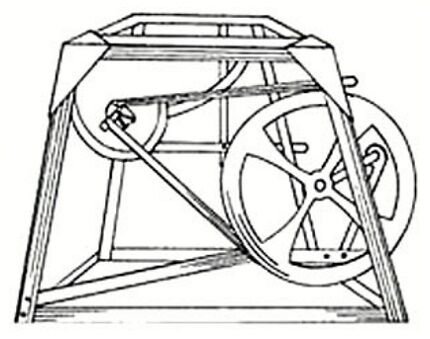
An analogue of the crank mechanism is now easier to find. It’s enough to remember where my grandmother’s foot-operated Singer sewing machine is kept. With some modifications, Singer's followers of the Chaika brand will do.

It is advisable to give preference to the old versions with a cast iron frame. It will withstand any thermal and mechanical stress. The ideal solution would be a structure on wheels, which can easily be moved to a place convenient for work.
Forge from a cylinder with a propane torch
Let us immediately warn you that this model of forge is suitable only for those who have considerable experience working with propane. The gas chamber of this option is quite large, therefore, at the slightest violation of the rules, the explosion can be destructive. The consequences are unpredictable, but in most cases catastrophic.
A master who decides to make a forge from an oxygen cylinder will need exactly this empty container with a diameter of 25 cm. Fireproof materials will be needed: stove, cement, paint, kaolin wool. You will need fasteners, a ceramic coating, and a threaded steel barrel to arrange the burner connection point.
You will also need fasteners and other materials, which we list in the text. To carry out the work, you need to stock up on a grinder, a set of taps size 10-32, a spatula, a coating brush, a drill and files. You will also need protective equipment: an effective respirator, cotton work gloves, and goggles.
The following photo selection will show you how to assemble a homemade forge from an oxygen cylinder:
If the cylinder initially did not have support legs and a handle at the top for carrying, they should be welded. By the way, if you have no experience in welding, work on connecting parts can be done with bolts or by soldering.
Next, we need to arrange a pipe for introducing the burner into our homemade forge:
Now you need to secure the pipe and build a device for fixing the propane burner in the pipe:
Now is the time to start arranging the bottom of the homemade forge. To do this, we will need fireclay bricks, from which we will construct a kind of desktop. At the same time, we will separate the high temperature zone from contact with the metal wall of the housing.
The bottom, also known as the working refractory table of the forge, is ready. Now let's start arranging the back wall:
We've sorted out the back part, now the most difficult and time-consuming part is assembling the removable cover for the front end. It is removed to periodically change the burnt-out insulation and brick stand, because. This often happens during active use.
We can assume that we have successfully completed the work; only the final stages remain:
We would like to warn home craftsmen: blacksmithing is a very interesting activity, but dangerous. You need to protect your eyes and, if possible, cover all parts of your body, despite the high temperature in the work area.
In order to protect against burns, you need to stock up on shoes with metal-reinforced socks. It is advisable to purchase a long canvas apron and mittens. It is strictly forbidden to work with heated metal while wearing synthetic clothing - it will immediately flare up from an accidental spark.
Conclusions and useful video on the topic
Original tips for independent craftsmen on setting up forges for a private forge:
How to make a small furnace for hardening metal blanks:
Detailed instructions on the manufacture of stationary equipment for heating metal with gas:
We have examined and analyzed only a small fraction of the designs and schemes for constructing forges. In fact, there are much more of them. However, the information we offer will help you get an idea of the types of equipment so that you can choose the best one.
Would you like to share your own experience in assembling a homemade forge and setting up a forge? Please leave comments in the form below, ask questions, post photos on the topic of the article. It is possible that your recommendations will be very useful to site visitors.
